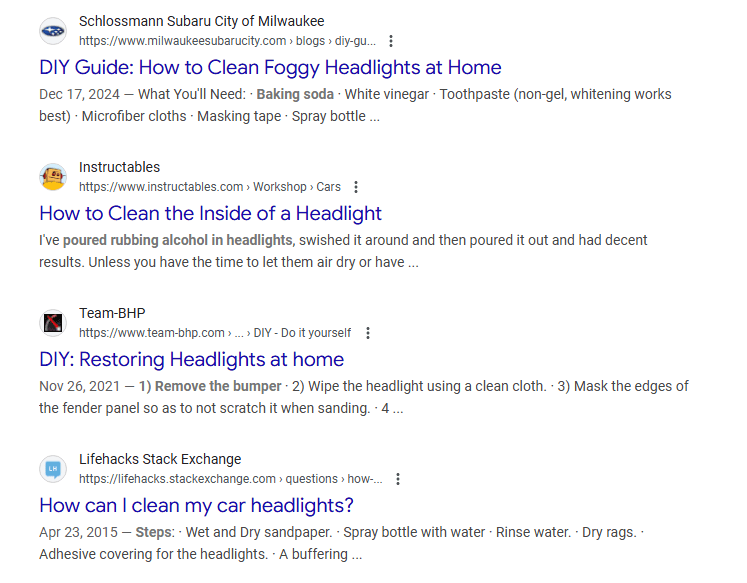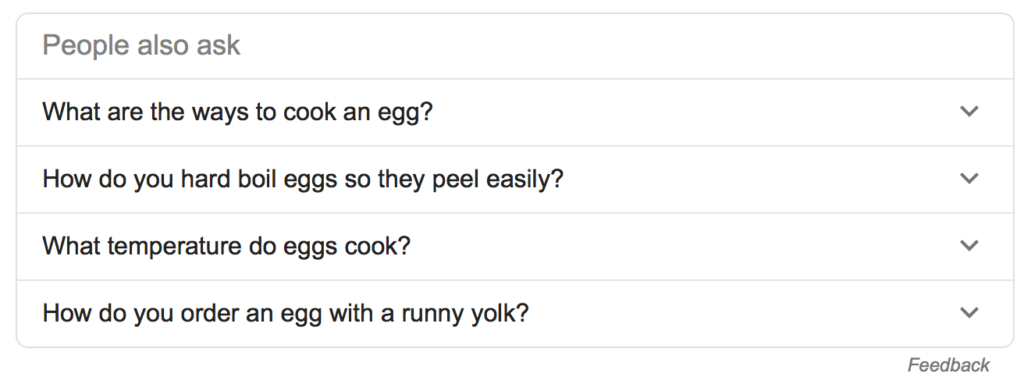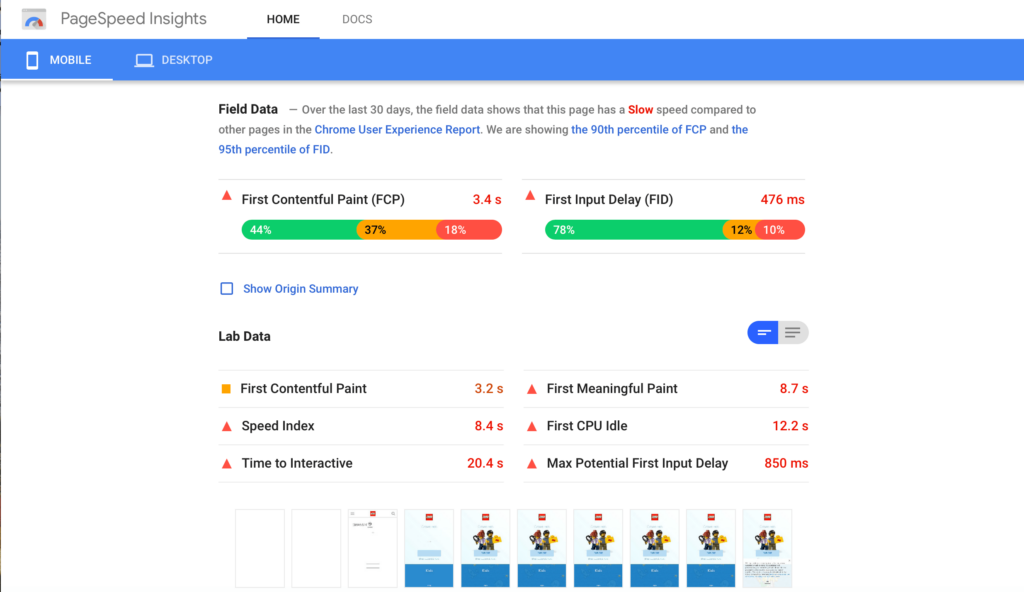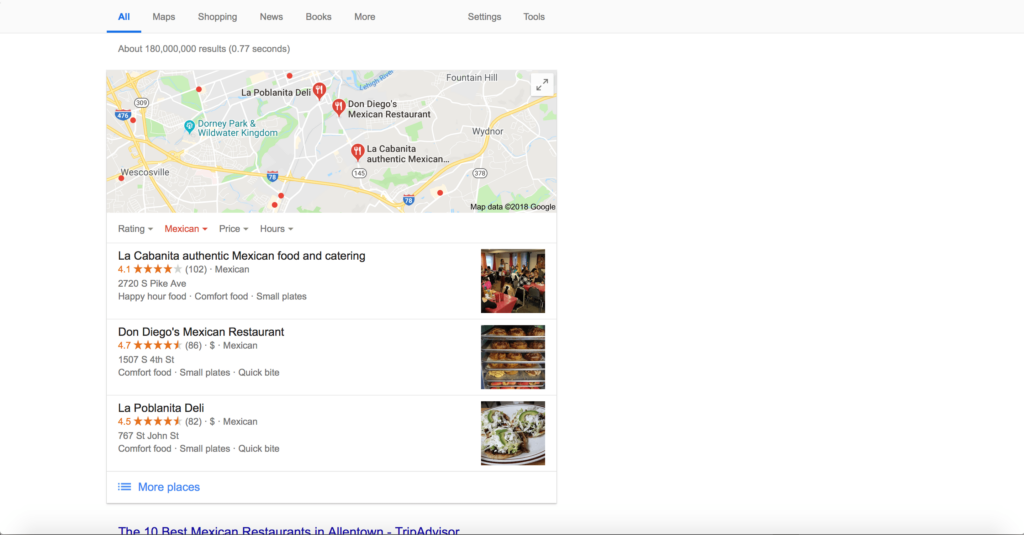-
 Published: Sep 24, 2025
Published: Sep 24, 2025
-
 12 min. read
12 min. read
-
Summarize in ChatGPT
-
 Matthew Gibbons
Matthew Gibbons Senior Data & Tech Writer
Senior Data & Tech Writer
- Matthew Gibbons is a Senior Data & Tech Writer at WebFX, where he strives to help businesses understand niche and complex marketing topics related to SEO, martech, and more. With a B.A. in Professional and Public Writing from Auburn University, he’s written over 1,000 marketing guides and video scripts since joining the company in 2020. In addition to the WebFX blog, you can find his work on SEO.com, Nutshell, TeamAI, and the WebFX YouTube channel. When he’s not pumping out fresh blog posts and articles, he’s usually fueling his Tolkien obsession or working on his latest creative project.
Table of Contents
- What is an SEO marketing strategy?
- Top 8 elements to add to your SEO marketing strategy
- 1. Relevant, long-tail keywords
- 2. In-depth, quality site content
- 3. Fast-loading website
- 4. User-focused design
- 5. Responsive design
- 6. Voice search optimization
- 7. Local SEO
- 8. SEO analytics
- Build a revenue-generating SEO marketing strategy
A whopping 75% of users don’t look beyond the first page of online search results. That means if you don’t rank at the top of search results, you’ll miss out on valuable traffic, leads, and revenue for your business.
Luckily, a robust search engine optimization (SEO) marketing strategy will help you rank at the top of search results for keywords related to your business. And the right SEO strategy elements will allow you to drive more valuable traffic to your site.
On this page, we’ll help you dive into the ins and outs of SEO plans, as well as eight elements of a successful SEO marketing strategy. Those elements include:
- Relevant, long-tail keywords
- In-depth, quality site content
- Fast-loading website
- User-focused design
- Responsive design
- Voice search optimization
- Local SEO
- SEO analytics
By the way, if you want to kick things off swiftly, be sure to use our free SEO toolkit. It offers an immediate SEO assessment, guidance and explanations for enhancing your website’s SEO.
What is an SEO marketing strategy?
An SEO marketing strategy is a plan for optimizing your site for search engine optimization. Building, implementing, and maintaining an SEO strategy can help your business improve its search rankings, organic traffic, and even organic conversions.
Top 8 elements to add to your SEO marketing strategy
When creating your custom SEO marketing strategy, you’ll want to focus on these elements to improve your SEO and return on investment (ROI).
- Relevant, long-tail keywords
- In-depth, quality site content
- Fast-loading website
- User-focused design
- Responsive design
- Voice search optimization
- Local SEO
- SEO analytics
1. Relevant, long-tail keywords
The first element to add to your SEO marketing strategy checklist is keywords.
If you want to show up in search results for keywords related to your company, you need to target those keywords in your site content, page titles, meta descriptions, and more. And to get the most from your SEO marketing strategy, you’ll want to focus on targeting relevant, long-tail keywords.
Long-tail keywords contain three or more words (e.g., “best plumber in Harrisburg, PA”). When people search for long-tail keywords, you’re better able to distinguish their search intent — exactly what they’re trying to find.
If someone searches for a short-tail keyword like “plumber,” they could be searching for a number of things — a list of the best plumbers near them, plumbing services, or even plumbing jobs.
However, if someone searches for the long-tail phrase, “best plumber in Harrisburg, PA,” it’s clear they want to work with a top plumber in the Harrisburg area.
By targeting long-tail keywords, you’ll connect with qualified leads who are most likely to become customers.

To find long-tail keywords for your SEO strategy, you must conduct keyword research.
This research will help you find keywords that are relevant to your site and customers. You can use keyword research tools, like Buzzsumo or KeywordsFX, to help you find relevant long-tail keywords for your SEO strategy.
For more advanced keyword research tools, consider Semrush or Moz.
Once you select your long-tail keywords, you’ll add them to key places on your site. This integration will help you rank in relevant search results for those keywords.
By choosing the right long-tail keywords, you’ll help your site appear in more relevant search results and drive more interested leads to your site.
2. In-depth, quality site content
Another key SEO marketing strategy element — custom site content — is necessary for ranking in search results and helping leads learn more about your business.
Content marketing allows you to share your knowledge and expertise with your audience. It’s an excellent method for helping you establish your business as an authority while you drive valuable traffic to your site.
To start creating content, you’ll want to come up with topics and ideas. Stick to topics related to your industry, and use keyword research to ensure you’re driving the right traffic to your site.
If you’re a baker writing about how to make pizzas, for example, you’re going to drive traffic interested in pizza shops, not bakeries.
Your keyword research will help you find new topics to cover. These keywords will give you a starting point for creating valuable content your audience seeks.
Once you select your topics, you’ll choose the content formats you want to use. Content comes in many forms, including videos, blogs, infographics, articles, and ebooks. You’ll want to use a variety of these formats to ensure that your content is always fresh and exciting.
After you select your format, you’ll start composing your content. If you don’t know what to cover in your article or where to start, try doing a quick Google search. That will allow you to see what other results come up for the topic.
You can also look at the “people also ask” section to see what questions people ask around the subject. It’s a great way to get inspiration for shaping your content.

When you create content, you’ll want to publish it consistently and often. An effective SEO marketing strategy involves continually publishing content to drive traffic to your site. You always want to try to get in front of your audience and get them to check out your business.
Once leads find your in-depth, quality content, they will remain on your site to absorb the information and take the next step with your business. That longer dwell time will send a positive signal to Google that your site is relevant and helpful — and in turn, it will boost your rankings.
Creating quality is essential for earning and maintaining top rankings, and it’s a crucial component of your SEO marketing strategy.
3. Fast-loading website
A whopping 83% of users expect your website to load in three seconds or less — and if it doesn’t, they’ll leave.
One of the most critical components of SEO in digital marketing is your site’s load time. When users visit your site, they want to access information quickly. If your site is struggling to load, users will abandon your website in favor of a faster loading site.
These actions will lead to an increase in your site’s bounce rate. A high bounce rate sends a negative signal to Google that your website isn’t relevant to the user’s search query — and a slow-loading website will hurt your SEO rankings.
To prevent this from happening, you must incorpporate improving your site’s load time in your SEO strategy.
You can use Google PageSpeed Insights to evaluate your site’s current load speed. This tool helps you understand if your website loads quickly enough on desktop and mobile. If you need improvements to your site, Google will offer suggestions on how to improve your site’s load time.

If you don’t know how to improve your site or don’t have the time to improve it, you can invest in page speed services from a digital marketing company like WebFX.
4. User-focused design
When it comes to SEO planning, user-focused design is one of the most critical components of your SEO marketing strategy.
When you increase dwell time on your site, it sends a positive signal to Google that your website is relevant and helpful to your audience. A user-focused design will help you keep your audience engaged on your site longer.
If you have a well-designed site that is easy for your audience to use, they are more likely to remain there. Your audience will easily find the information they need, which will keep them engaged on your page longer.
So, how can you create a positive user experience on your site?
The first step is to create a navigation that is easy for your audience to use. People don’t want to struggle to find information on your site. If it’s too difficult to use your navigation bar, you’ll risk losing leads on your page.
Make your navigation straightforward by using broad headings. These broad headings will allow you to organize numerous categories beneath them, followed by subcategories. This organization will make it easier for your audience to browse your site and find the information they need.
Another great way to improve user experience is by breaking up your text with images and headers. Headers help you break down your information so your audience can easily read or skim it. In addition, images, graphics, and videos add visual appeal to your text that makes your content more interesting for your audience.
These design elements are just a few of the features you can use to create a better user experience for your audience. By integrating these elements into your SEO plan, you’ll help your audience have a positive experience on your site and spend more time on your page.
5. Responsive design
In addition to user-friendly design, you also need to make responsive design a big part of your SEO marketing strategy. Your audience will access your website from a variety of devices, and you’ll need to ensure that it loads correctly on all devices.
Responsive design ensures that your website adapts to whatever device a user is using. Whether your audience uses a smartphone, tablet, or desktop computer, they should have a positive experience on your site. With responsive design, your website will adapt to fit their device as best as possible.
Each device has a different screen size. You wouldn’t want to view the mobile version of your site on desktop, nor vice versa. By integrating responsive design into your SEO plan, you’ll ensure that your website adapts to any device your audience uses.
Responsive design will provide your audience with positive user experience and keep them happy on your page. It will encourage them to spend more time on your site, which will improve your SEO rankings. So, be sure to include this element in your SEO marketing plan.
6. Voice search optimization
Voice search is one of the most common ways for users to search for information. That’s why voice search optimization is a critical component of a good SEO marketing strategy.
More than 1 billion voice searches happen each month. This mode of searching is continually growing as one of the most popular ways to find information. You want to ensure that you’re not missing out on leads who search for your business through these devices.
So, how do you optimize for voice search?
To optimize for voice search, you must understand how users search verbally. When users conduct verbal searches, they phrase their search queries differently.
Let’s say someone is searching for somewhere to buy pizza. If this person searched online through a browser, they might search “pizza near me.” On the other hand, someone who searches verbally would ask, “Where can I find pizza near me?”
The most significant difference you’ll notice between the two types of searches is that people pose verbal searches as full questions. When you’re optimizing for voice search in your SEO marketing plan, you’ll want to optimize for questions people may ask when trying to find your business, products, or services.
Additionally, you’ll also want to optimize for any slang your audience might use when conducting verbal searches. People are more likely to use slang when searching verbally because they’re speaking.
7. Local SEO
When you’re creating your SEO marketing strategy, you’ll want to make sure local SEO makes the list.
Local customers search for your business online. If you optimize for local SEO, you’ll help your business reach local leads looking for your company. So, how do you optimize for local searches?
When users conduct a local search, it generates a box with a list of three businesses. This box is known as the local SEO 3-pack. Users tend to use the local SEO 3-pack to help them find the right company for their needs.

To help your business appear in the local SEO 3-pack, you must start by claiming your Google Business Profile listing. Your Google Business Profile listing is your business’s local listing that enables you to reach more local leads interested in your business.
Once you claim your Google Business Profile, you’ll want to fill it out completely. Fill in your contact information, verify your address, add photos of your business, products, or services, and include any critical details that can help sell you over the competition.
By filling out your profile thoroughly, you’ll help your audience feel more informed about your business. When your audience knows more about your business, they can better determine if you’re a good fit for their needs.
Local SEO is one of the essential components of SEO for reaching valuable local leads. By claiming your Google Business Profile and optimizing it, you’ll have a better SEO marketing strategy and reach more interested leads for your business.
8. SEO analytics
The last component of a successful SEO marketing strategy is analytics.
When it comes to SEO campaign management, it’s important to track your strategy’s performance. You don’t want to invest time, money, and effort into a campaign if you aren’t continually improving your campaign to make the most of your investment.
One of the most critical elements of an SEO roadmap is your analytics. Your analytics will provide you with valuable insight into your SEO strategy and how you can improve your plan to drive better results.
When you monitor your analytics, you can see numerous metrics that will provide you with insight into your campaign, including page views, time on page, conversions, and more. All these analytics will help you understand the effectiveness of your campaign and how people interact with your business.
Knowing how your campaign performs helps you make adjustments. You can see where your campaign falls short and needs improvement. Your analytics will help you optimize your SEO marketing strategy to drive better results.
Build a revenue-generating SEO marketing strategy
You don’t have to do everything. Make life easy and get the SEO pros at WebFX on your side. From developing strategy to optimizing websites to measuring bottom-line impact, WebFX provides everything your business needs.
Explore our SEO services today or contact us online to speak with a strategist!
-
 Matthew Gibbons is a Senior Data & Tech Writer at WebFX, where he strives to help businesses understand niche and complex marketing topics related to SEO, martech, and more. With a B.A. in Professional and Public Writing from Auburn University, he’s written over 1,000 marketing guides and video scripts since joining the company in 2020. In addition to the WebFX blog, you can find his work on SEO.com, Nutshell, TeamAI, and the WebFX YouTube channel. When he’s not pumping out fresh blog posts and articles, he’s usually fueling his Tolkien obsession or working on his latest creative project.
Matthew Gibbons is a Senior Data & Tech Writer at WebFX, where he strives to help businesses understand niche and complex marketing topics related to SEO, martech, and more. With a B.A. in Professional and Public Writing from Auburn University, he’s written over 1,000 marketing guides and video scripts since joining the company in 2020. In addition to the WebFX blog, you can find his work on SEO.com, Nutshell, TeamAI, and the WebFX YouTube channel. When he’s not pumping out fresh blog posts and articles, he’s usually fueling his Tolkien obsession or working on his latest creative project. -

WebFX is a full-service marketing agency with 1,100+ client reviews and a 4.9-star rating on Clutch! Find out how our expert team and revenue-accelerating tech can drive results for you! Learn more
Try our free Marketing Calculator
Craft a tailored online marketing strategy! Utilize our free Internet marketing calculator for a custom plan based on your location, reach, timeframe, and budget.
Plan Your Marketing Budget
Table of Contents
- What is an SEO marketing strategy?
- Top 8 elements to add to your SEO marketing strategy
- 1. Relevant, long-tail keywords
- 2. In-depth, quality site content
- 3. Fast-loading website
- 4. User-focused design
- 5. Responsive design
- 6. Voice search optimization
- 7. Local SEO
- 8. SEO analytics
- Build a revenue-generating SEO marketing strategy

SEO Success with KOA

Proven Marketing Strategies
Try our free Marketing Calculator
Craft a tailored online marketing strategy! Utilize our free Internet marketing calculator for a custom plan based on your location, reach, timeframe, and budget.
Plan Your Marketing Budget
What to read next




